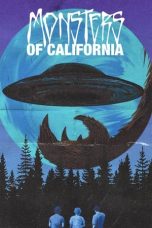- Source: December 2017 Southern California wildfires
A series of 29 wildfires ignited across Southern California in December 2017. Six of the fires became significant wildfires, and led to widespread evacuations and property losses. The wildfires burned over 307,900 acres (1,246 km2), and caused traffic disruptions, school closures, hazardous air conditions, and power outages; over 230,000 people were forced to evacuate. The largest of the wildfires was the Thomas Fire, which grew to 281,893 acres (1,140.78 km2), and became the largest wildfire in modern California history, until it was surpassed by the Ranch Fire in the Mendocino Complex, in the following year.
On December 5, Governor Jerry Brown declared a state of emergency for Ventura and Los Angeles Counties, followed by San Diego County on December 7; U.S. President Donald Trump subsequently declared a State of Emergency for California on December 8.
This swarm of wildfires was exacerbated by unusually powerful and long-lasting Santa Ana winds, as well as large amounts of dry vegetation, due to a then-far unusually dry rainy season thus far. They also occurred at the end of an unusually active and destructive wildfire season; the fires cost at least $3.5 billion (2018 USD) in damages, including $2.2 billion in insured losses and $300 million in fire suppression costs.
Wildfire maps
These maps depict the location and burn areas of some of the major wildfires.
Wildfires
= Thomas Fire
=The first report of the fire was at 6:26 p.m. on December 4 just north of Santa Paula, near Steckel Park and Thomas Aquinas College. Fanned by Santa Ana winds, over the next few hours it rushed 12 miles (19 km) across rural backcountry into the city of Ventura, burning close to 500 homes and consuming 50,000 acres (200 km2). Over the next days, it advanced toward Ojai and had jumped Highway 33 and the Ventura River into the Rincon Oil Field area. By December 8, the Thomas Fire had grown to 143,000 acres (580 km2) with only 10% containment, and fire officials estimated that the fire had cost at least $17 million to fight. By the evening of December 10, the Thomas Fire had reached 230,000 acres (930 km2) in size, becoming the fifth largest wildfire in modern California history, and the largest wildfire recorded in California during the month of December. There were multiple periods of time when the fire was advancing at a rate of over an acre a second. The Thomas Fire had also destroyed at least 794 structures while damaging 187 others, and cost at least $38.4 million to fight, becoming at least the 10th most destructive wildfire in California history. Early on December 11, the Thomas Fire had grown to 230,500 acres (933 km2), while containment of the fire had increased to 15%. On December 13, the Thomas Fire's northwestern flank linked up with its southwestern flank, to the east of Carpinteria, enveloping an area containing Ojai and Lake Casitas. Early on December 16, the Thomas Fire reached a size of 259,000 acres (1,050 km2), with 40% containment, surpassing the Rim Fire as California's third-largest wildfire. On December 19, the Thomas Fire reached 272,000 acres (1,100 km2), with 55% containment, surpassing the burn area of the Rush Fire in California to become the second-largest wildfire in modern California history. During the evening of December 22, the Thomas Fire expanded further to 273,400 acres (1,106 km2), with containment at 65%, surpassing the Cedar Fire of 2003 to become California's largest wildfire in modern history. On December 24, the Thomas Fire grew to 281,620 acres (1,139.7 km2), after the fires from a back-burning operation completely merged into the Thomas Fire's northwestern flank, though containment of the wildfire also increased to 86%.
On January 8–9, 2018, a winter storm struck California, bringing heavy rain to Southern California, and prompting mandatory evacuations in parts of Los Angeles, Santa Barbara, and Ventura Counties, over potential mudslides in areas affected by wildfires. At least four inches (100 mm) of rain fell over the two-day period, causing several major mudflows.
On January 12, 2018, the U.S. Forest Service declared the Thomas Fire 100 percent contained, at 281,893 acres. Afterward, Los Pedros National Forest officials continued monitoring the burn area of the Thomas Fire for hotspots. On March 22, 2018, InciWeb declared the Thomas Fire to be inactive and ceased providing updates. On June 1, 2018, the Thomas Fire was officially declared to be out, after more than two months in which no hotspots were detected within the perimeter of the burn area.
= Creek Fire
== Rye Fire
== Little Mountain Fire
=On December 5, at 12:28 p.m. PST, a wildfire broke out near University Parkway and Varsity Avenue in San Bernardino, just off Interstate 215. The wildfire quickly grew to 100 acres (40 ha), causing the closure of Interstate 215, and triggering evacuation orders for residents in the area. Students at Shandin Hills Middle School, on Little Mountain Drive, were also evacuated to Holcomb Elementary School. At 6:30 p.m. PST on the same day, the road closure and the evacuation orders had been lifted, though the Little Mountain area still remained closed off. On December 6, the Little Mountain Fire grew to 260 acres (110 ha), while firefighters worked to contain the flames. Firefighters made progress on the fire that day, due to the weakening of the Santa Ana winds in the area beginning on the evening of December 5. During the evening of December 7, firefighters managed to extinguish the Little Mountain Fire, with no increase in acreage. Three civilians were burned by the fire, and were sent to a hospital for treatment. Three garages suffered minor damage, but no other structures were damaged by the fire. An investigation revealed that the fire was caused by an illegal cooking fire at a homeless camp.
= Skirball Fire
== Lilac Fire
== Liberty Fire
=The Liberty Fire was reported on December 7, at 1:14 p.m. PST, in Murrieta, in Riverside County. The Liberty Fire began as a vegetation fire. By the evening the Liberty Fire had grown to 300 acres (120 ha), with 10% containment. On the next day, with the improved weather conditions, firefighters made much more progress on the fire, bringing it to 90% containment. Late on December 9, the Liberty Fire was fully contained. Six structures and an outbuilding were destroyed by the fire.
= Other wildfires
=On December 7, a small brush fire broke out at Huntington Beach. The small brush fire burned 2 acres (0.81 ha) before it was fully contained on the same day, damaging a daycare center and a bank.
On December 7, 2 small brush fires broke out north of Buellton, in Santa Barbara County. The brush fires were collectively dubbed as the "Woodchopper Incident", with the first fire burning 5 acres (2.0 ha) and the second fire burning 4 acres (1.6 ha), before they were both contained later on the same day. The brush fires briefly caused the closure of Highway 101.
On December 8, at 9:30 a.m. PST, the Sweetwater Fire broke out in eastern San Diego County, south of Interstate 8 and just west of Japatul Valley Road, in Descanso. The wildfire burned about 8 acres (3.2 ha) of land, before it was fully brought under control about 4 hours later.
On December 8, sometime before 12:56 p.m. PST, a small brush fire broke out in the El Sereno neighborhood of Los Angeles. Firefighters quickly extinguished the fire in a little over an hour, after the fire had burned 6 acres (2.4 ha).
On December 8, around 2:15 p.m. PST, a small brush fire broke out in Otay Mesa Canyon, in southern San Diego County. Firefighters were able to quickly extinguish the flames.
Early on December 11, firefighters quickly put out two small fires in Ocean Beach, San Diego. At around 2:15 a.m. PST, firefighters put out a burning fence in the 4,400 block of Santa Cruz Avenue, before responding to another shed fire less than a mile away, on Muir Avenue at 2:30 a.m., which damaged an RV. Arson investigators believe that the two fires are connected.
On December 11, two wildfires ignited along Interstate 805 in southern San Diego. The first fire ignited near Route 54 and Interstate 805, which was quickly extinguished. The second fire ignited at 2:07 p.m. PST at Interstate 805, to the south of Mesa College. This fire triggered the closing of the right two northbound lanes of Interstate 805 (on the side of the fire), and the fire burned 0.5 acre (0.20 ha) before firefighters were able to stop its spread.
On December 13, a small brush fire broke out in Oxnard, near Highway 101, just after 7:50 AM PST. The fire reached a quarter acre in size, before it was quickly contained within an hour.
During the night of December 15, just before 10:10 p.m. PST, a small brush fire broke out near Otay Valley Road, near a trucking facility in Otay Mesa, in southern San Diego County. The fire burned about 20 vehicles, before it was brought under control.
On December 19, at 8:20 a.m. PST, a small fire broke out at San Diego International Airport, near the 4000 block of Pacific Highway. The fire burned through a storage area and a couple of businesses, before firefighters were able to get the fire under control several hours later. The fire is estimated to have caused at least $1 million in damage.
Impacts
The December 2017 wildfires burned large areas of land and resulted in large property losses. In addition, the wildfires forced over 230,000 residents to evacuate their homes.
California Governor Jerry Brown declared a state of emergency in Ventura and Los Angeles Counties on December 5, and San Diego County on December 7. Los Angeles mayor Eric Garcetti declared a state of emergency for the city on December 6. U.S. President Donald Trump declared a state of emergency for the state of California on December 8.
Deaths
One civilian death was recorded, a 70-year-old woman, Virginia Pesola, from Santa Paula. In addition, Cory Iverson, a firefighter, perished while fighting the Thomas Fire. "This is a tragic reminder of the dangerous work that our firefighters do every day," said Los Padres National Forest Supervisor Teresa Benson in a release. "The Thomas Fire has many unprecedented conditions and complexities that challenge the already demanding job of fire suppression."
Aftermath
= Mudslides
=The wildfires destroyed many acres of forest. Due to the lack of trees' roots holding the soil together, the ground had reduced stability and was vulnerable to mud slides in heavy rain. In early January 2018, heavy rain was predicted for the American Southwest, causing flash flood watches and evacuations to be issued for portions of California affected by wildfires.
See also
2017 California wildfires
October 2017 Northern California wildfires
Blue Cut Fire (2016)
May 2014 San Diego County wildfires
October 2007 California wildfires
Cedar Fire (2003)
Santiago Canyon Fire
2018 Southern California mudflows
References
External links
2017 Statewide Fire Map, Google
SDSC WiFire Interactive Map — San Diego Supercomputer Center
2017 California fires information Archived December 14, 2017, at the Wayback Machine — CalFire
Southern California's Worst Brush Fires
Kata Kunci Pencarian:
- California
- Kamala Harris
- Kebakaran hutan dan lahan
- December 2017 Southern California wildfires
- 2017 California wildfires
- 2018 California wildfires
- October 2017 Northern California wildfires
- Creek Fire (2017)
- Thomas Fire
- 2008 California wildfires
- Wildfire
- 2018 Southern California mudflows
- Rye Fire
Monsters of California (2023)
Blade Runner 2049 (2017)
Spider-Man: Homecoming (2017)
Star Wars: The Last Jedi (2017)
Wonder Woman (2017)
Guardians of the Galaxy Vol. 2 (2017)
No More Posts Available.
No more pages to load.














